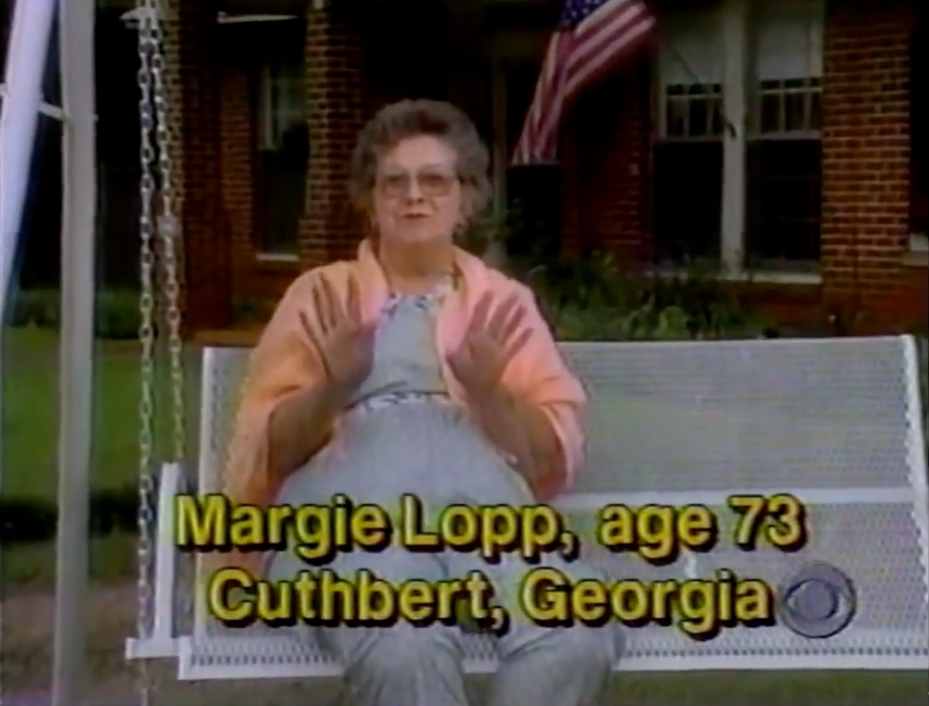ASTROLOGY.NET wanted to entice people to sign up for its daily horoscopes via e-mail. Between Astrology.net and its online agency Acxiom/Direct Media, they came up with seven letters to test-from short form to long form, from “inside astrologer” to more straightforward.
“At 9 a.m. we sent the seven,” says Acxiom’s Reggie Brady. “By noon, two were doing well. At 2 p.m. we sent the two winners and a brand new one created from the other two. The sign-up rate for the new letter was 43% (some of the others were as low as 17%). The next morning we rolled out.”
Clearly, that’s the main difference between testing in the postal world and testing in cyberspace: the speed.
But as more and more direct marketers test e-mail, they are finding many similarities too. And more importantly, they’re beginning to learn a thing or two about the practice-about what works and what doesn’t.
“We’re seeing people be much more aggressive in the things they’re doing than at the beginning,” says Deb Goldstein, president of IDG Communications List Services in Boston. “But it is still so new that every time someone goes out there it’s an adventure.”
Experts say there is one basic rule of thumb: Everything you test in postal mail, you should test in e-mail. (That includes e-mail lists, of course-see DIRECT, June.)
The bottom line: Don’t forget your DM basics just because you’re doing e-mail. “The biggest lesson is to remember the things that got you your biggest success offline,” says Goldstein. “And then look at the differences in terms of what the medium offers. Some of the basics still hold. An offer is an offer. A letter is a letter.”
Auction site Onsale Inc., working with e-mail services firm Digital Impact, San Mateo, CA, spent a month doing A/B testing of formatting, trying different subject lines, arrangement of paragraphs, HTML vs. text-only, all of which helped lift response.
For the second phase, which began last December and ended in March, it used self-identified information and also its collaborative filtering software-which predicts the auctions people would be most interested in-to personalize the offers. (Each day, Onsale mails to a third of the 750,000 subscribers to its “Steals and Deals” newsletter.)
Jack Herndon, director of installed base marketing at Onsale, says the most important elements have been HTML and collaborative filtering to help make the right offers. He adds that, with the second phase, approaches that did well in the tests increased response 20% to 30% over the control, and brought in 10% more revenue.
Another area of agreement concerns when to mail. Marketers say that, for business-to-business offers, the middle of the week (especially Tuesday) is best; people have too much mail to wade through on Monday, and by Friday they have other things on their mind. For consumers at home, weekends are best; some send on Thursday or Friday, knowing it won’t be read till the weekend.
The first thing an e-mail recipient reads (other than, possibly, the return address, which should always have the company’s identifiable name) is the subject line. In e-mail, the subject line is the digital version of envelope teaser copy. Subject lines are being tested like mad. Some marketers prefer personalization; others think offers work best in getting recipients to click open the mail.
But the results from testing subject lines can be surprising. E-mail marketing tools provider Media Synergy Inc., Toronto, did a test with and without “win” in the subject line, and those without did better. “Our theory is that Internet users are more skeptical,” says Media Synergy account manager Jonathan Coulman.
Stephanie Healy, interactive sales manager for Omaha Steaks, said a “buy one, get one free” subject line beat out one about “grilling perfect steaks.”
On the other hand, for Memorial Day she tested a subject line about getting free franks or burgers with a purchase against one about big savings for the holiday, and the latter was beating out the former.
The subject line is great for personalization. Onsale found that when it used first and last name in a subject line it had a 10% increase in the number of people who opened the mail and a single-digit increase in click-throughs.
“Personalization is the best cheap trick around,” says MyPoints.com’s chairman and CEO Steve Markowitz. “We know it from postal mail in the ’60s and ’70s. Everything we send is personalized. We’ve done tests with and without it and the lift is several points.” (MyPoints personalizes in the salutation but not in the subject line because it has a standard format that emphasizes the offer.)
Yet, according to a March study by Forrester Research, Cambridge, MA, most companies marketing through e-mail are using very little personalization (even so, it found the average click-through rate in e-mail was 18%). “People haven’t made the mental connection that all the things you can do in postal mail you can do in e-mail,” says Markowitz.
One truism of DM is that longer copy pulls better than shorter. Not so in the digital age.
“In some ways the comparison between postal and e-mail seems good, but really it’s closer to a TV news story where you have to capture them immediately or they’re gone,” says Media Synergy’s Coulman.
Coach Leatherware sent out a mailing but by accident forgot to put in the copy and left only the headlines. It got the biggest pull ever. On the other hand, Geo. W. Park Seed Co. Inc., Greenwood, SC, a seed and flower company, does better with long copy of gardening tips and a subtle offer, according to Jim Williams of MarketHome Inc., Berkeley, CA, the e-mail service house for both Coach and Park Seed.
Finally, as any student in Direct Marketing 101 knows, one of the most important elements of a direct mail letter is the postscript. But postscripts don’t make much sense in e-mail, and that space at the bottom is usually reserved for the “opt-out” information.
Marketers are testing the number and order of the offers, as well as their position in the copy. Generally, three to five work best, these experts say.
Keith Wardell, president of Shop2U.com, Fairfax, VA, which sends catalogs via e-mail, says he has used two variables in one test-number of offers and frequency of mailing-with some interesting results. He sent out e-mail catalogs with 10, 20 and 30 offers, varying with once a week or twice a month.
“The ironic result was that when we sent more frequently they were more likely to buy from the 10-product catalog,” he says. “And when we sent twice a month they bought from the 30-product one.”
Brady, Acxiom’s business unit leader for interactive services, says you should always include multiple links. She recommends three marketing links and the opt-out and to lead with the strongest offer-because the first one always gets the most click-throughs. (She says Acxiom’s own CatalogLink site once placed the opt-out as the first link and that’s when its opt-out got a lot of click-throughs.)
“I see e-mails come in with just one hotlink and I can’t believe people do that,” says Jason Fruchtman, list manager at VentureDirect Worldwide, New York. “I recommend having at least three hotlinks in an e-mail. With one, you don’t even see it when you open the mail. The more options you give, the better it is.”
Placement of the links is crucial. Links can be bunched together or spread out with more text and space near each one.
E-mail experts agree that at least one marketing link (as opposed to the opt-out link) should be “above the fold”-within the first screen that the recipient sees. Brady says she recently came across an e-mail from a car company in which the first screen talked about the new model but the link to the Web site was below the fold. “That’s a disaster,” she says.
Healy of Omaha Steaks says that when she uses a link to the company’s home page it does better than the links to individual products; she’s now moved the home-page connection to the bottom of the message so the recipients “go right to the products.”
Another issue in e-mail marketing is whether it’s best to use a hard or soft offer.
“Our experience shows us that soft offers work orders of magnitude better than hard offers,” says MyPoints.com’s Markowitz. One exception, he adds, might be in using a “curriculum approach” to a hard offer-using a series of e-mails to introduce the product, lead the consumer to a Web site, then to try to make a sale.
Jason Fruchtman of Venture agrees: “You see a lot of hard offers-‘buy now’ with a phone number. I don’t think anybody’s buying directly from an e-mail. They want to see a hotlink that takes them to a Web page.”
Yet, Rosalind Resnick of e-mail firm NetCreations Inc., New York, notes that DealADay.com, now part of Cybershop, has made hard offers work.
“Up until a year ago,” she says, we were telling everyone to go with soft offers.
“But I was amazed when DealADay.com came to us and said they wanted to send out hard offers. They went ahead and did it and did really well.”
Another approach is to test content combined with an offer.
Ray Kaupp, Digital Impact’s vice president of marketing, says that for one client (that he can’t name), an informational newsletter in which the offer was secondary was tested against a straight product pitch. Both pulled about the same but the product pitch “was felt to be much more crassly commercial. The other was felt to be better at insuring loyalty and the client went with that approach.”
Marketers are also busy testing HTML mail against text-only mail and finding lifts with the graphic messages of up to three times. The problem is that not many people have e-mail software that reads HTML. So marketers either send one message with a program that determines what kind of e-mail program the recipient uses or sends both the HTML and text-only mail in the same message. In the latter case, recipients see only the text if that’s all they can read-though they may also see some ugly HTML tags.
The issue will become moot in the next year or so when everyone goes HTML.






